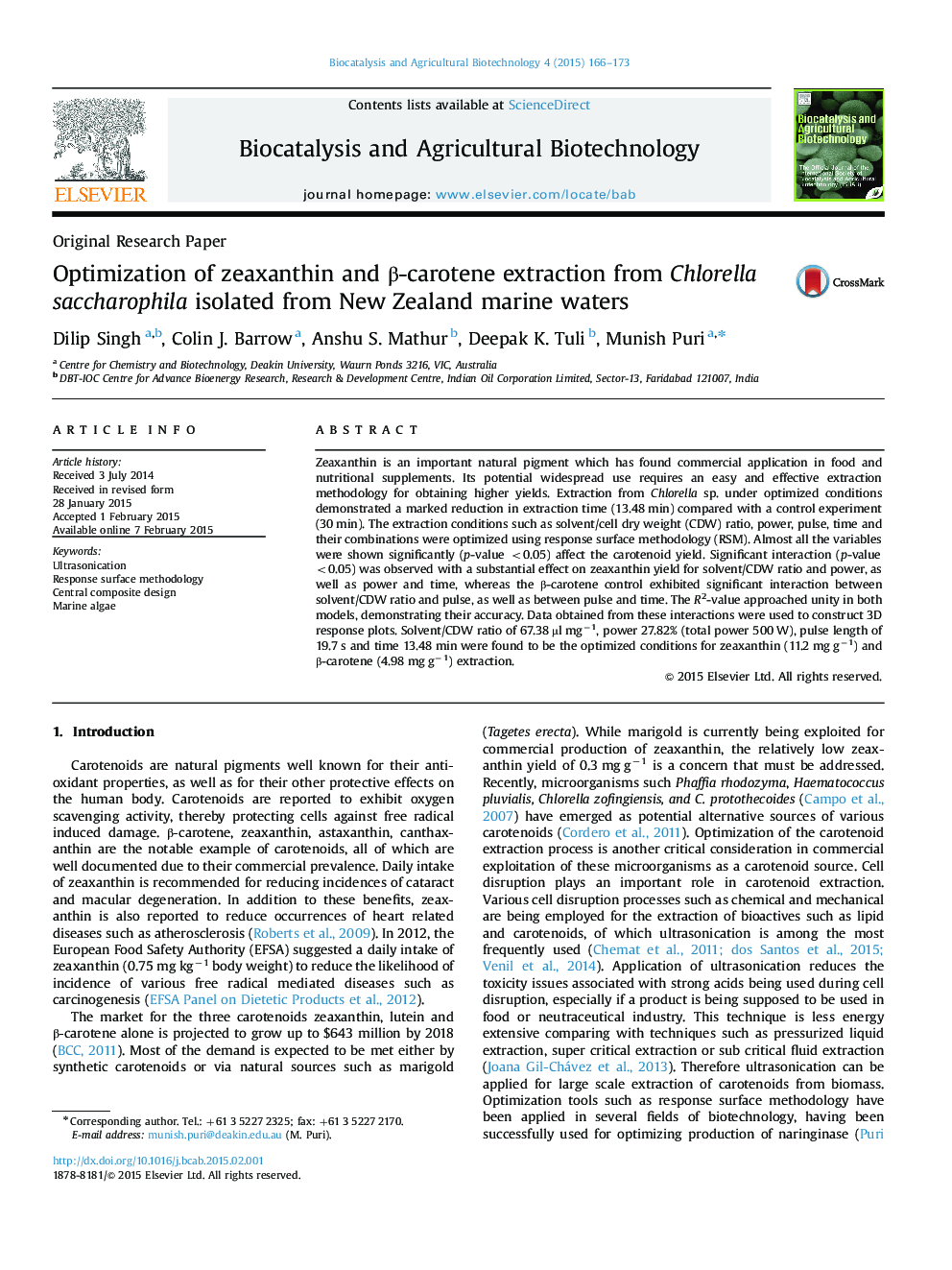| Article ID | Journal | Published Year | Pages | File Type |
|---|---|---|---|---|
| 2075434 | Biocatalysis and Agricultural Biotechnology | 2015 | 8 Pages |
Zeaxanthin is an important natural pigment which has found commercial application in food and nutritional supplements. Its potential widespread use requires an easy and effective extraction methodology for obtaining higher yields. Extraction from Chlorella sp. under optimized conditions demonstrated a marked reduction in extraction time (13.48 min) compared with a control experiment (30 min). The extraction conditions such as solvent/cell dry weight (CDW) ratio, power, pulse, time and their combinations were optimized using response surface methodology (RSM). Almost all the variables were shown significantly (p-value <0.05) affect the carotenoid yield. Significant interaction (p-value <0.05) was observed with a substantial effect on zeaxanthin yield for solvent/CDW ratio and power, as well as power and time, whereas the β-carotene control exhibited significant interaction between solvent/CDW ratio and pulse, as well as between pulse and time. The R2-value approached unity in both models, demonstrating their accuracy. Data obtained from these interactions were used to construct 3D response plots. Solvent/CDW ratio of 67.38 µl mg−1, power 27.82% (total power 500 W), pulse length of 19.7 s and time 13.48 min were found to be the optimized conditions for zeaxanthin (11.2 mg g−1) and β-carotene (4.98 mg g−1) extraction.
